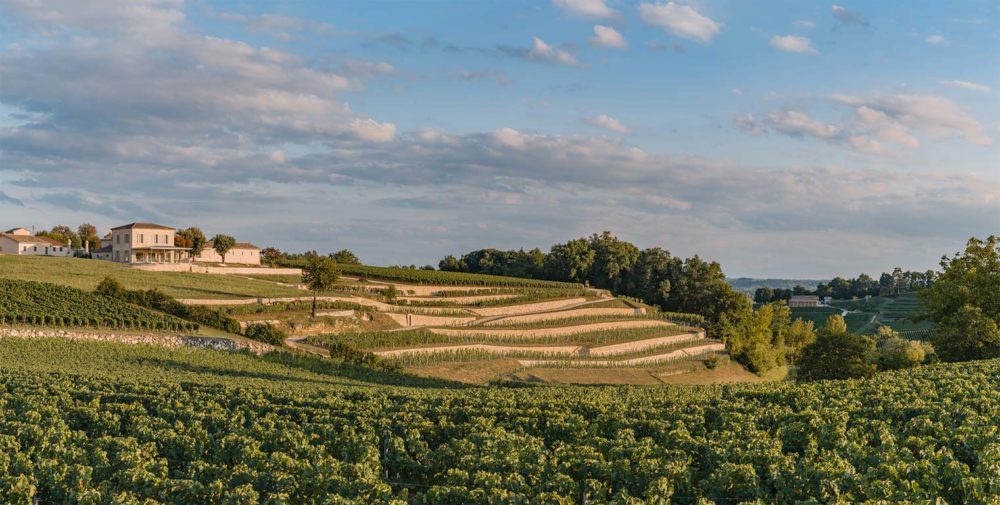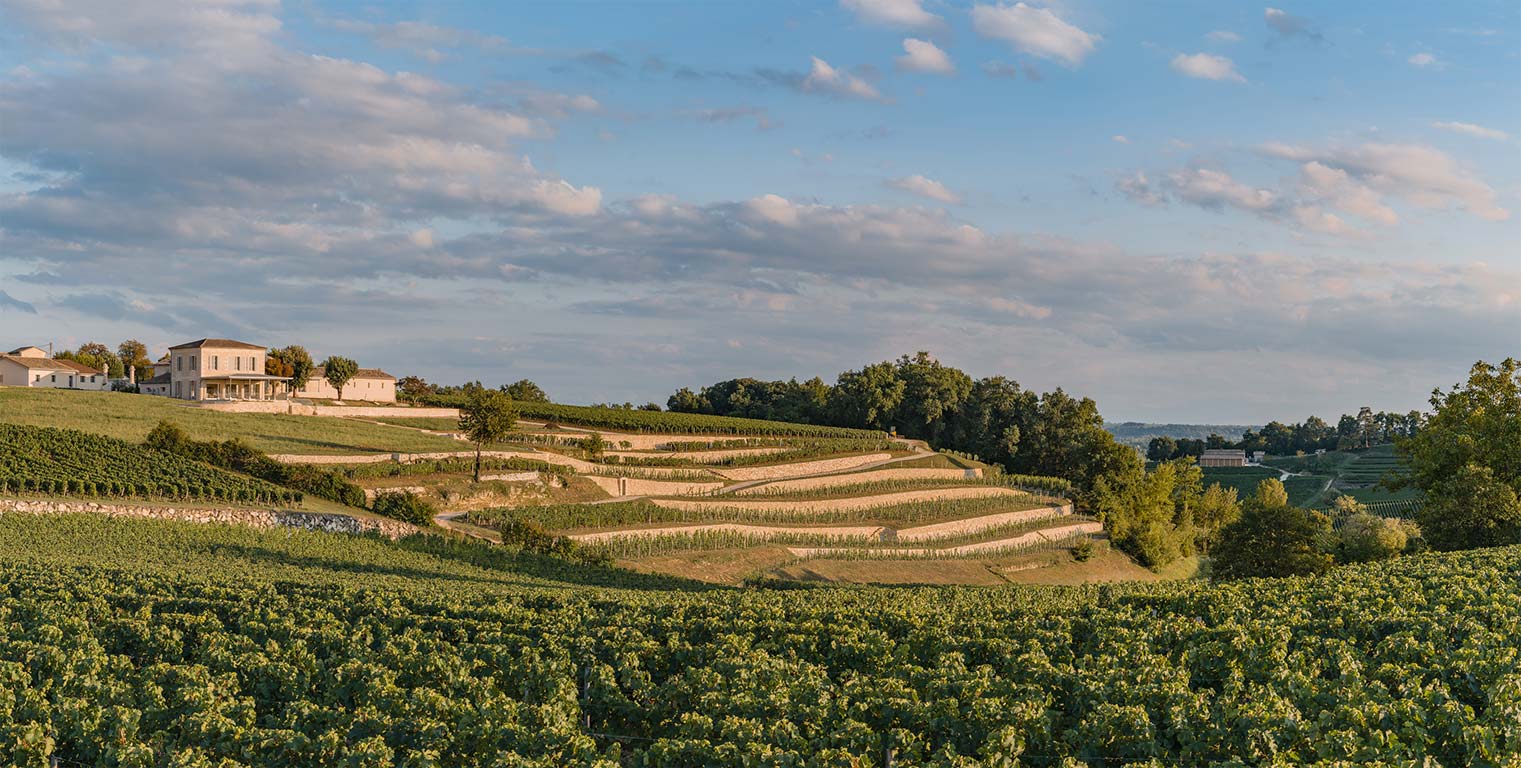
One of the most picturesque vineyards in Saint-Emilion is unquestionably that of Château Tour Saint Christophe, which lies on the eastern side of Saint-Emilion, in the commune of Saint-Christophe-des-Bardes. The property was purchased by Peter Kwok and his daughter Karen in 2012. Kwok, who is also the driving force behind the quality of Chateau Bellefont Belcier, Enclos Tourmaline, Haut-Brisson, La Patache, and others, immediately went to work restoring the property and vineyard, and there has been a notable uptick in the quality of the wines.
The vineyard consists of 20 hectares of steep, south-facing terraces of clay and hard limestone soils (also known as Astéries limestone) planted to roughly 80% Merlot and 20% Cabernet Franc, with 7,000 vines per acre. The Merlot vines average 30 years of age, the Cabernet Franc slightly older (average 50 years of age). Farming has moved toward organic and sustainable methods, and new parcels are planted at a slightly higher density, seeing 7,500 vines per hectare.
Looking at the wines, everything is manually harvested and yields are kept well in check, with 2018 harvested at a scant 35 hectoliters per hectare. The grapes are hand sorted and see a short three-day cold soak before fermenting in a mix of concrete tanks and 225-liter barrels. Minimal SO2 is used during the vinification, malolactic fermentation takes place in barrel, and the wine spends 18 months in roughly 40% new barrels, with a mix of coopers (Darnajou, Saury, Quintessence, Demptos, and Remond). The amount of new oak has gradually been reduced, and recent vintages show a more polished, integrated oak profile. Production is in the realm of 6,000 cases, which in 2018 was a selection from 70% of the total production. The estate also releases a second wine, the Les Terrasses de Tour Saint Christophe, as well as a white starting in 2017. The vineyard manager and winemaker is the talented Jérôme Aguirre (previously at Christine Péré-Vergé’s vineyards in Pomerol) with consulting advice from Michel Rolland.
This report looks at the wines from 2010 to 2017. While the earlier vintages are concentrated and rich, in 2014 you see another level of purity as well as elegance in the wines, and this is even more apparent in the 2015s, 2016s, and 2017s. These are still powerful wines, yet they have a beautiful sense of minerality, purity, and balance. While the current vintages have plenty of upfront appeal, I’ve no doubt they’ll evolve gracefully for at least 10-15 years. Lastly, these wines represent stunning values, and there are more than a few cases of these wines in my personal cellar.
Don’t miss a chance to try these wines. Dollar for dollar, they’re some of the best buys out there.

